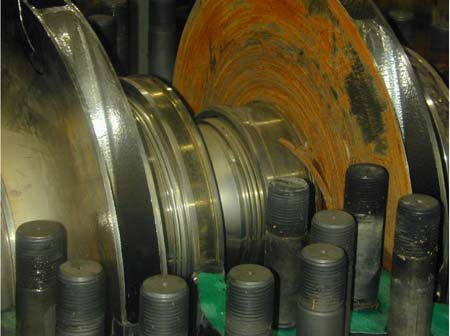Pumps & Systems
February, 2010
More than 15 years ago, a 160 in plate mill was experiencing significant maintenance problems with its descaling pumps; the typical mean time between repairs was only 6 to 8 months. Some rebuilt pumps even failed on start-up.
Descaling is one of the more severe, but critical, services in a steel mill. The pressures are high and the rapid changes in flows and pressures severely impact the pumps. At the same time, the pumps’ performance can significantly impact the quality of the steel produced.
Improvements to these pumps were implemented in various phases over several years. The path was not always straightforward and required close cooperation and teamwork between the aftermarket service provider and mill personnel to implement various upgrades.
Root Cause Analysis-Rotor Condition Analysis
At the start of the project, all of the pumps, which had been in service since the early 1970s, were exhibiting high noise levels along with abnormally high vibration, erosive wear and consistent, frequent maintenance problems.
The first step was to comprehensively analyze the pump rotor in a process called Rotor Condition Analysis. The Rotor Condition Analysis report, coupled with analysis of field operating conditions, provided the forensic evidence to identify the root causes of pump problems. This data, when analyzed in conjunction with the operational data, vibration readings and other field information, enables the aftermarket provider’s engineers to troubleshoot the pump and develop recommendations to solve the identified problems.





